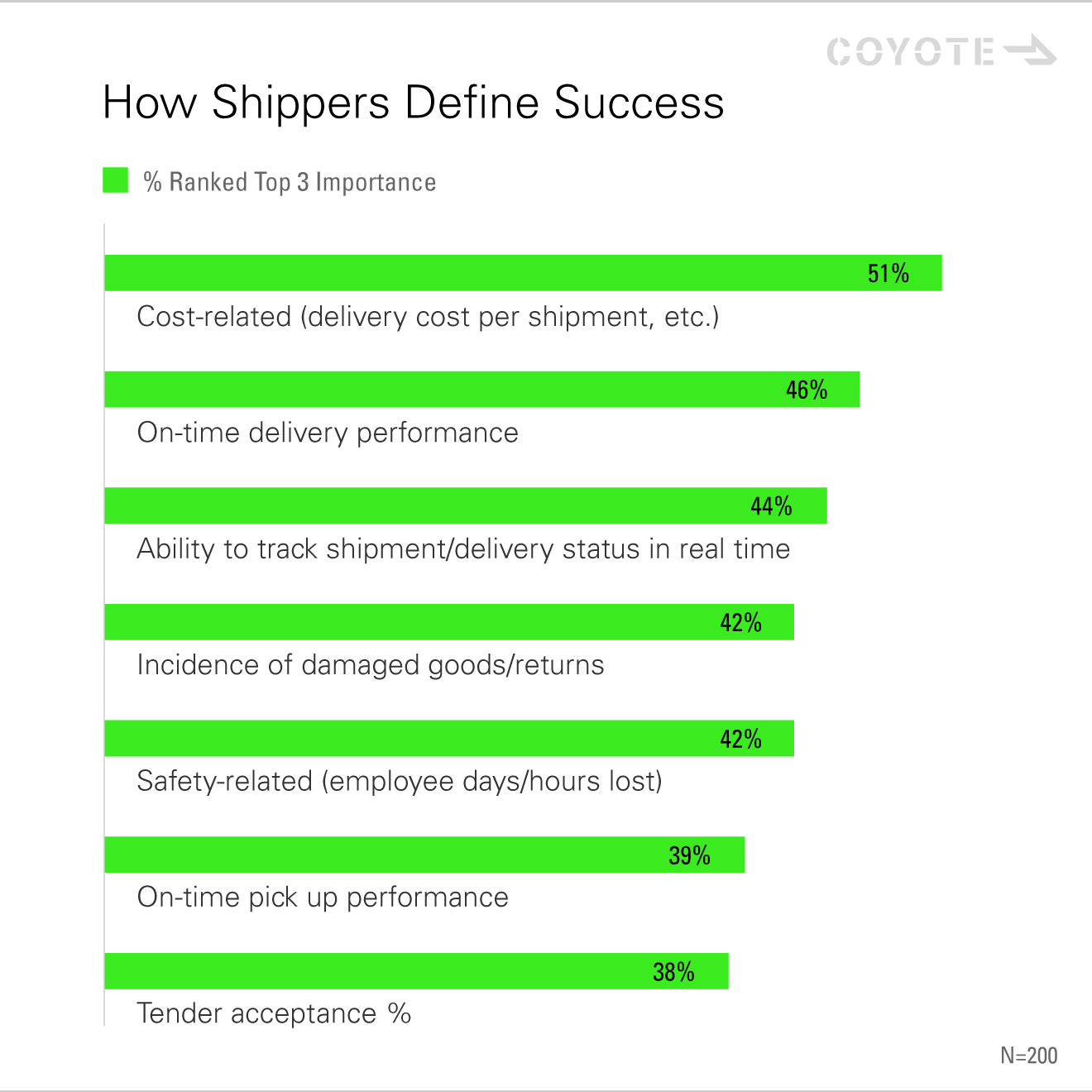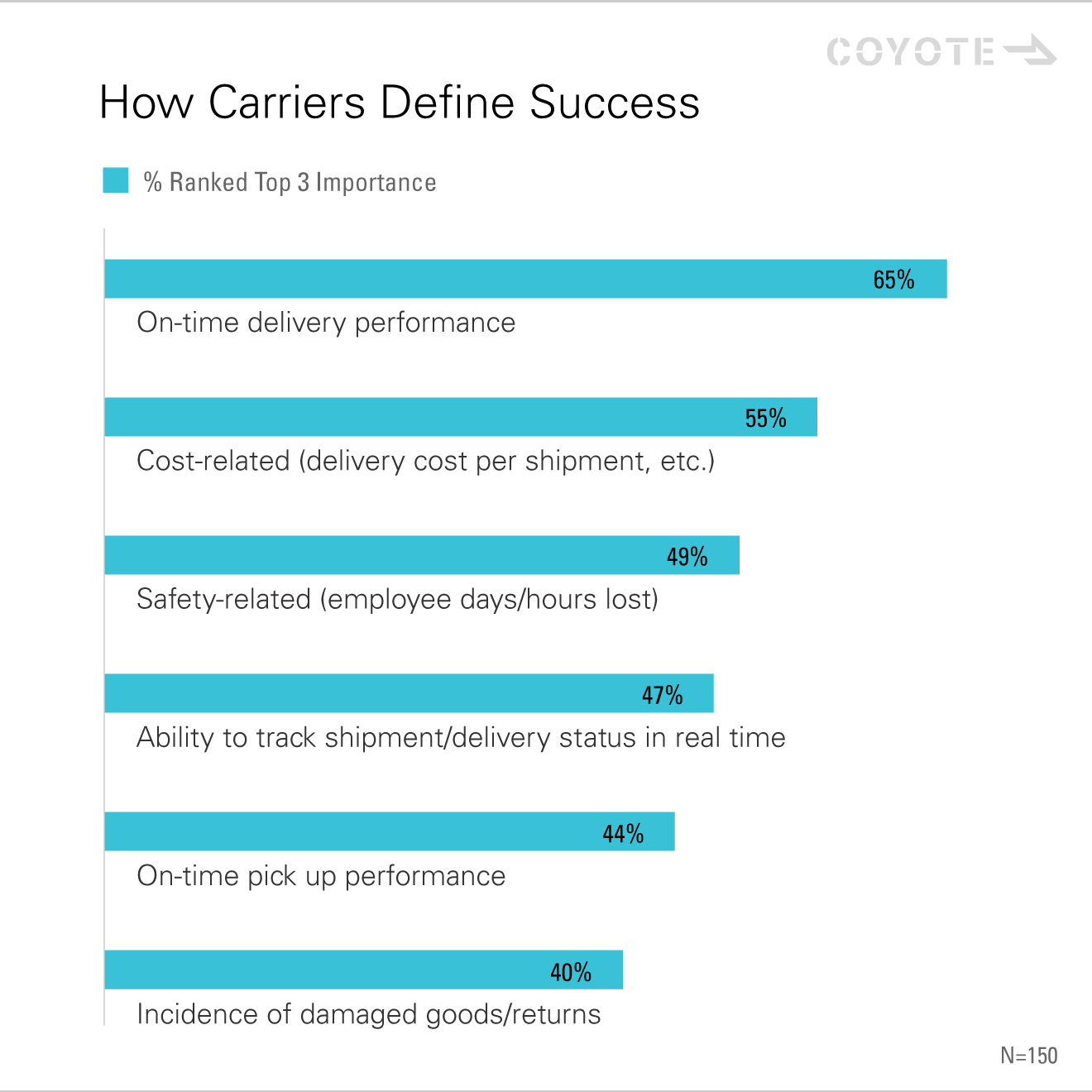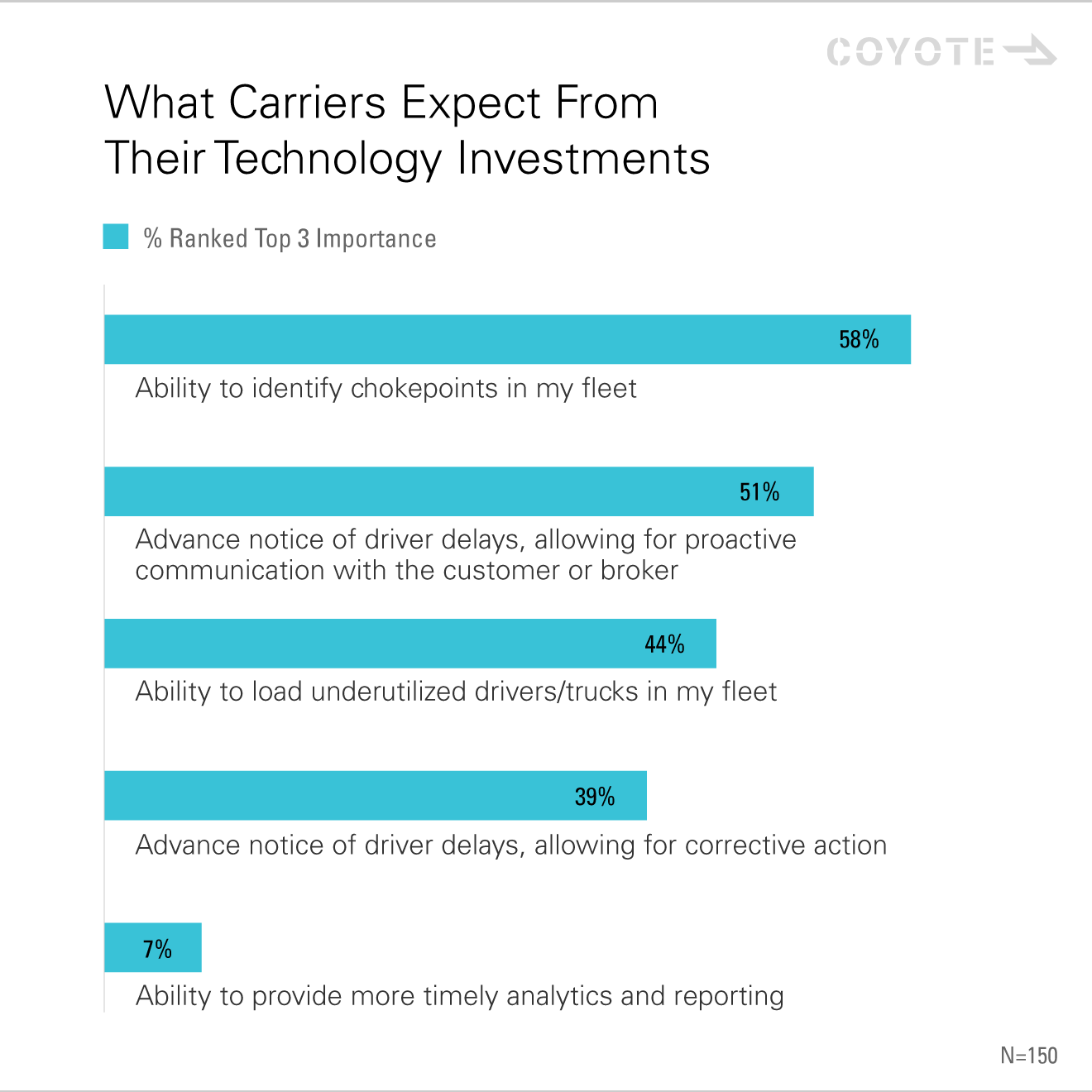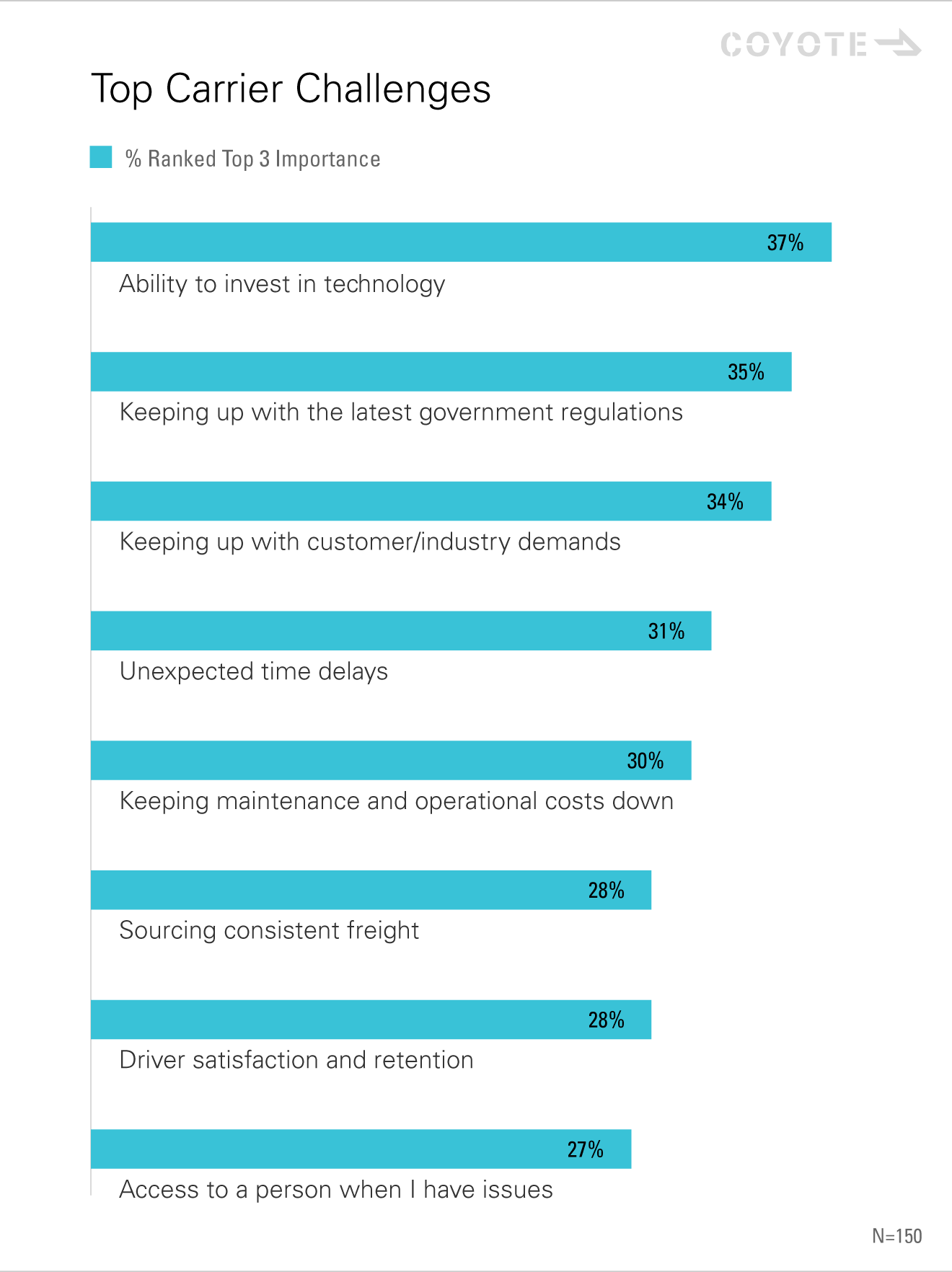4 Ways You Can Use Digital Tracking to Improve Your Business
A combination of growing shipper expectations, frequent regulatory changes, and truckload market volatility means continuous adaptation for every trucking business.
For fleets, the ELD mandate — which the FMCSA fully implemented in December 2019 — is a prime example of a how a regulatory change drives a significant shift in strategy.
Though the transition from pen-and-paper log books has been difficult for some carriers, it does have many perks. I spoke to how carriers are adapting to this change in a webinar with project44 right after the ELD mandate went into effect.
Let's look at how both shippers and carriers view on-demand visibility, and 4 ways you can use digital tracking to your advantage.
What Shippers Really Want
Shippers look at several KPIs (key performance indicators) when evaluating their transportation providers. To find out which ones were most important, we asked shippers to rate their top success metrics in our third-party research study.
Cost and on-time delivery were #1 and #2, respectively, but real-time tracking placed 3rd, with 44% of shippers rating it in their top 3.
When evaluating carriers, 44% of shippers consider the ability to provide real-time tracking as a top 3 metric.
In fact, 17% of shippers chose real-time tracking as their #1 success metric, which was higher than any other option.
With a softer 2019 freight market, plenty of available capacity, and the full implementation of the ELD mandate, shippers were able to turn real-time visibility from a nice-to-have into a requirement.
Like it or not, service alone is not enough for carriers to remain competitive. Today's shipper needs both great service and clear visibility into the great service you're providing.
What Carriers Really Want
We showed that shippers highly value digital freight tracking, but what do carriers think? We also asked carriers how they define success.
On-time performance was #1, followed by cost and safety, then — somewhat surprisingly —visibility.
47% of carriers consider real-time shipment tracking as a top 3 indicator of success, which is actually higher than shippers.
For shippers, on-demand load tracking is definitely a benefit, but for carriers, it's an essential part of operations.
Carriers that have embraced real-time shipment tracking can use the telematics data for many improvements, including:
- Network optimization
- Better customer relationship management
- More effective driver management
- Better resource planning
Carriers and shippers agree: on-demand shipment visibility data is an essential part of doing business. Both are investing in more, and better, solutions.
4 Ways to Use Real-Time Shipment Tracking to Help Your Fleet
Providing shipment visibility to your customers can help you stand above the competition and become a carrier of choice. Here are four ways we see carriers in our network using digital tracking to their benefit.
1. Use location data to provide better service.
Having an ELD in your truck is a good first step, but like all supply chain technologies, they work best when combined with experts (that's you) who can turn data into insights.
Visibility technology allows you to shift from reactive problem solving to proactive issue prevention. Instead of getting an angry call from your customer wanting to know where their shipment is, you can spot delays and reach out to them ahead of time.
Visibility technology allows you to shift from reactive problem solving to proactive issue prevention.
Not only can this calm down a frustrated shipper, it will give you a better chance of getting your driver worked in at the facility.
In logistics, unexpected things — from gridlock traffic to blown tires — will happen. It's how you handle issues that truly separates you from the competition.
Better visibility technology allows you to make the best of a bad situation.
2. Use visibility tech to improve fleet safety.
Having visibility into how your drivers operate on the road can help you reward safe behavior and address risky driving.
One of the carriers in our network, MDS Trucking, leverages truck tracking to improve driver safety and flag opportunities for more training.
“We get notifications whenever drivers slam on the breaks or are speeding, and our safety manager reaches out to drivers to resolve any issues as they arise.”
-Nik Mileusnic, Operations & Dispatch Manager, MDS Trucking
3. Use location data for more informed negotiations.
Understanding network choke points is not only valuable to shippers — it can help you run your business smarter.
ELDs will feed you information on when a shipment has been delivered. With an exact location and a time stamp, you have a powerful tool to use in a few different ways:
- Proof for detention requests.
This evidence will eliminate a lot of the he-said-she-said and speed up the time it takes for you and your driver to get paid. - Accurate data for driver planning.
With all the information going directly into your system, instead of relying on uploaded paper documents, you can quickly analyze which facilities will turn your drivers quickly, and where you can predict a delay. - Data for rate negotiations.
Not only can you use this for day-to-day driver planning, but you can use it for more strategic rate negotiations.- If, for instance, a shipper always loads a driver in an hour, it might make sense to be more aggressive.
- If, on the other hand, it consistently takes a shipper 3-4 hours to load, and there are frequent layovers, you can make a data-backed decision to be more conservative when quoting lanes out of that facility.
4. Use automated digital tracking to improve driver satisfaction.
Driver satisfaction is always top of mind for any trucking company — nothing moves without them. According to our research study, 28% of carriers rated driver satisfaction and retention as a top 3 challenge.
When on the road, drivers want to focus on doing their job. When on break, drivers want to relax. A surefire way to interrupt both is constant check calls from dispatchers, customers and brokers.
Automatic tracking updates from ELDs are a great way to eliminate unnecessary calls, saving them for planning and issue resolution.
It gives dispatchers more time to focus on finding freight and relationship building, and makes a better experience for drivers.
Digital Transformation is Hard — We're Here to Help Make It a Little Easier
Applying new technologies into business operations is time-consuming and difficult. Though there are always some short-term disruptions, better digital tools will make you more efficient in the long-term.
Here are 4 ways we see carriers using on-demand shipment tracking to improve their businesses:
- Use location data to provide better service.
- Use visibility tech to improve fleet safety.
- Use location data for more informed negotiations.
- Use automated digital tracking to improve driver satisfaction.
At Coyote, we try to make it easy for you to connect with us. There is not a one-size-fits-all solution for your business, so we provide four ways to provide your visibility data. Learn more about your tracking options.








